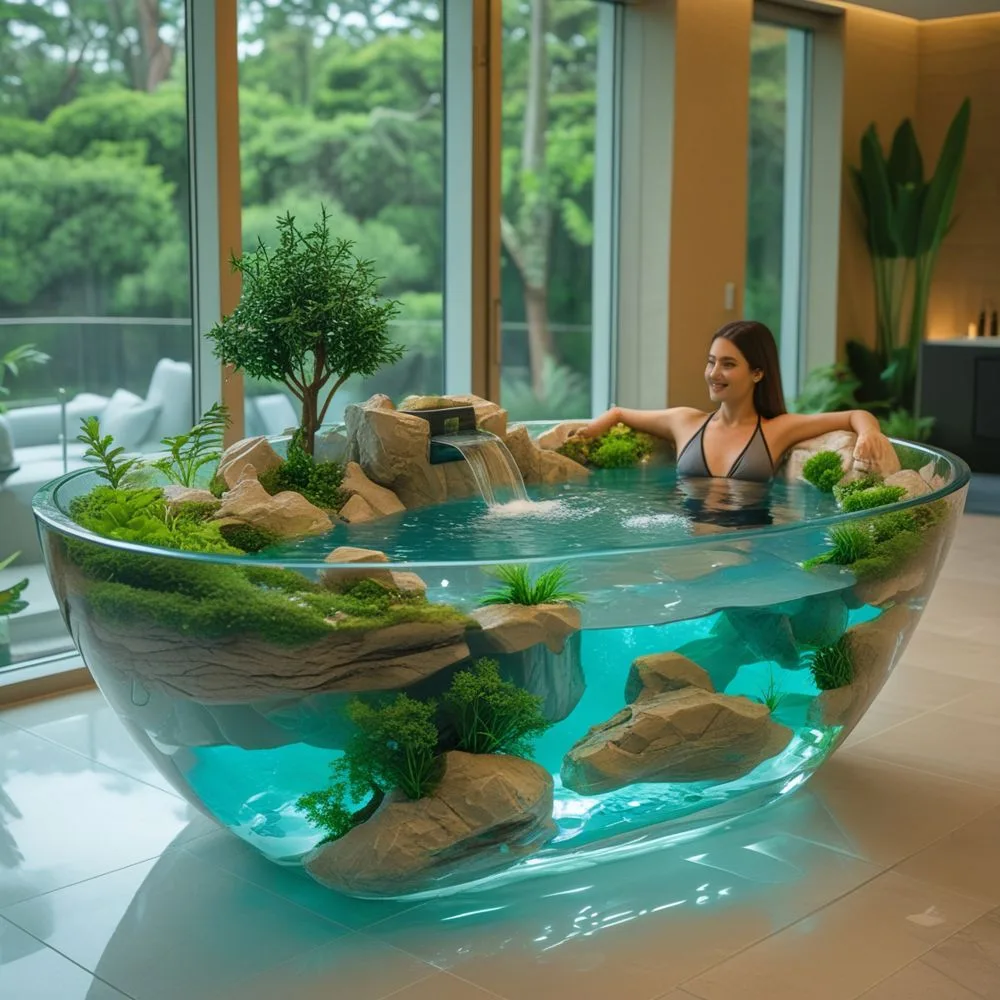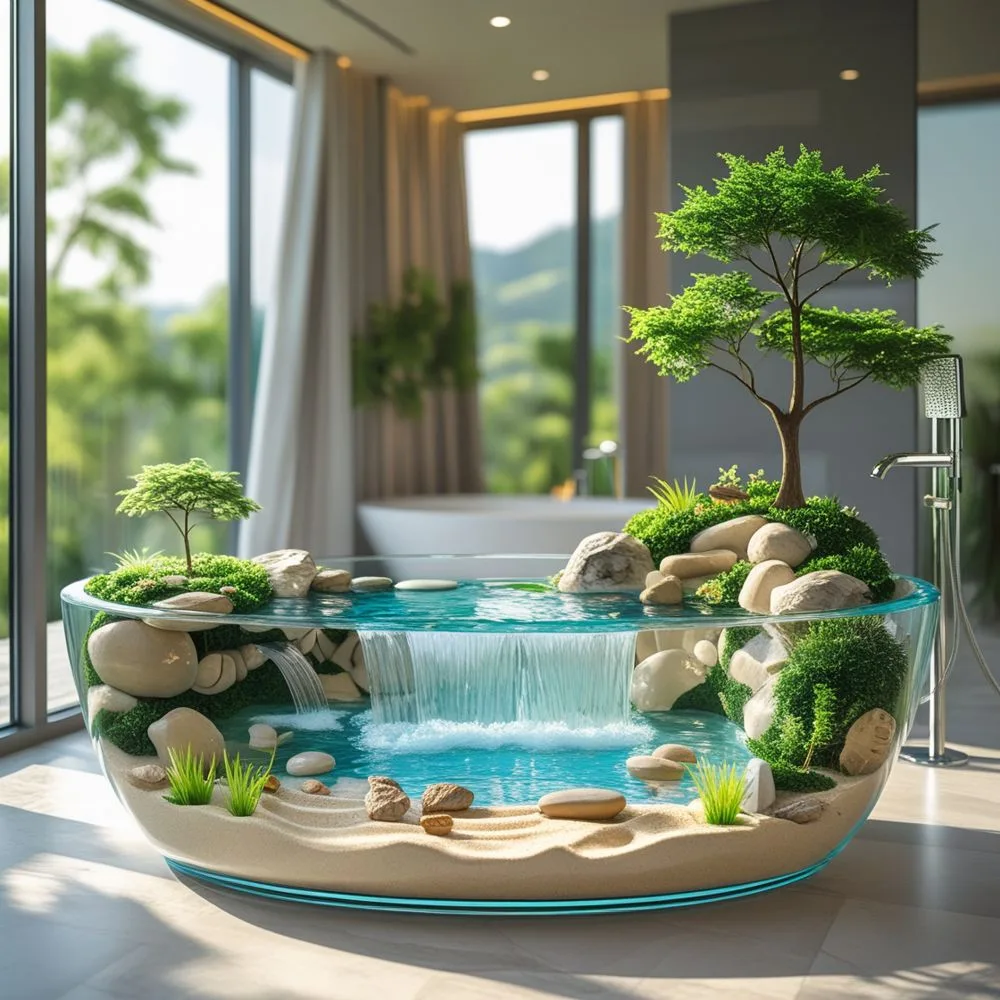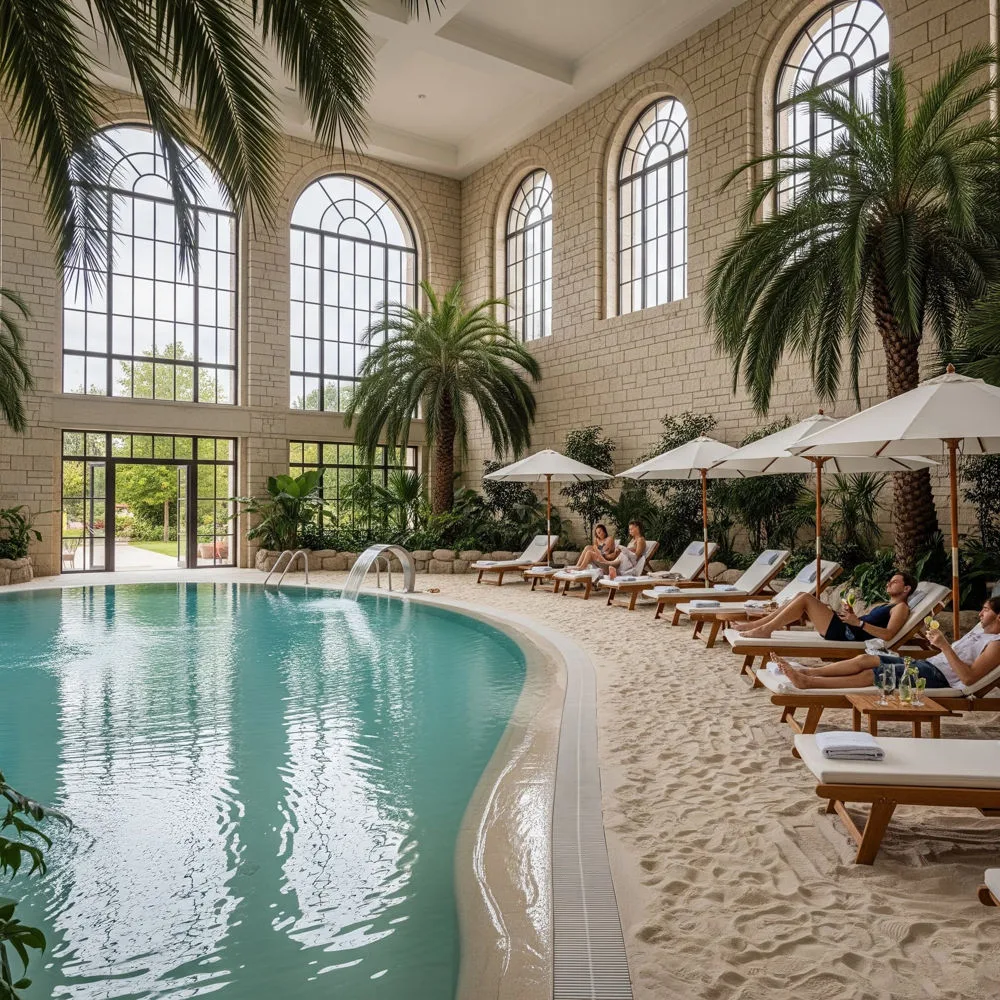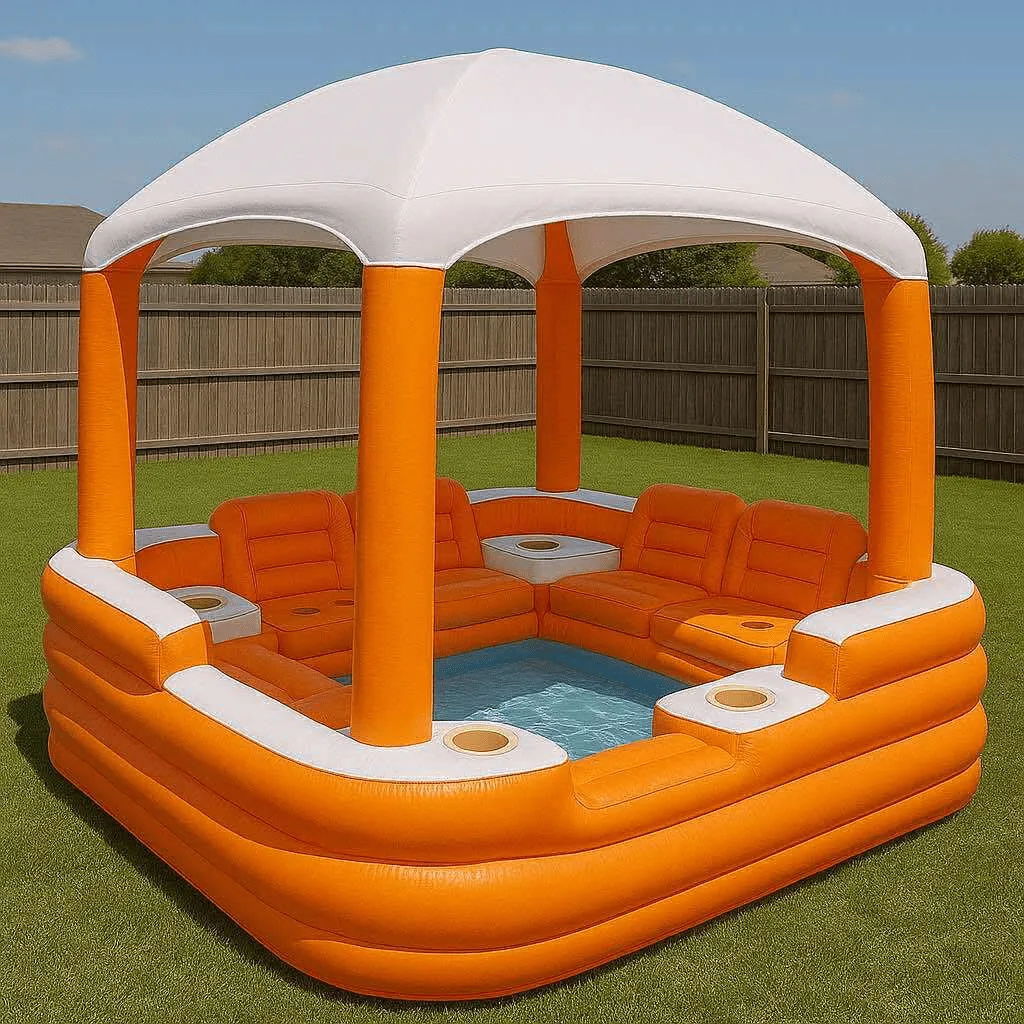Reconnecting with Nature Through Design
In a time where concrete jungles and fast-paced lifestyles dominate daily life, the craving for connection to nature has never been stronger. This yearning has found a new expression in home design through the rise of stunning nature bathtubs—bathroom installations that blend natural elements, tranquil aesthetics, and luxurious comfort to offer a bathing experience that is more than just routine. It is an escape, a sensory retreat, and often a work of art in itself.
Stunning nature bathtubs are more than functional tubs—they are sculptural pieces that emulate the raw beauty of rivers, forests, stones, and landscapes. They immerse the user not just in water, but in the ambiance of the natural world, allowing for meditative solitude, personal wellness, and visual harmony. This fusion of nature and modern design has elevated bathroom interiors to serene sanctuaries that calm the mind and body.
What Are Nature-Inspired Bathtubs?
Stunning nature bathtubs are bathtubs designed to resemble or integrate with natural materials, forms, and environments. They draw inspiration from the earth—mimicking the appearance of carved rock, flowing water, mossy ground, or forest elements—while offering modern functionality. These tubs may be placed outdoors, indoors, or in hybrid spaces that bridge both.
Common Materials Used
- Natural Stone (granite, river rock, marble)
- Wood (teak, hinoki, cedar)
- Concrete with organic shapes and finishes
- Recycled materials or eco-friendly composites
- Glass for waterfall or lake-inspired designs
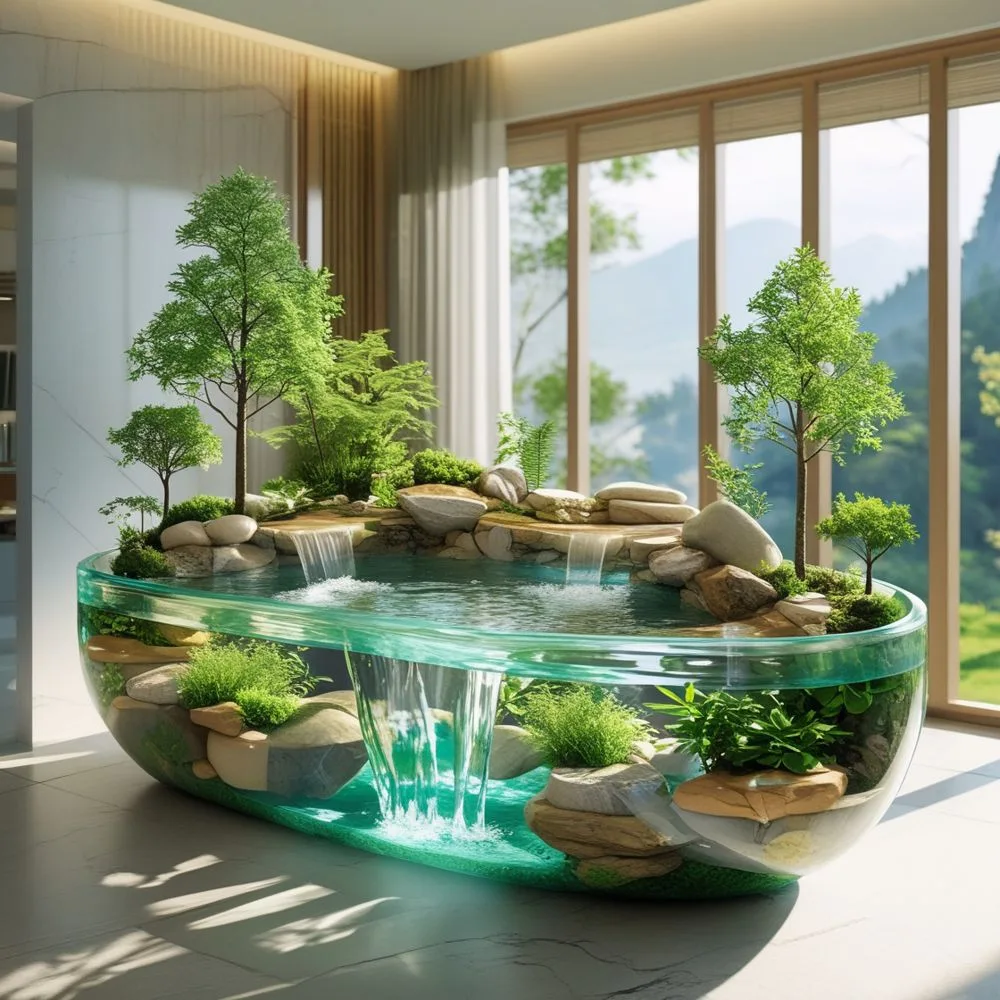
Each material contributes texture, warmth, or contrast to the space, enhancing the multisensory experience of bathing.
Shapes and Forms
- Organic silhouettes that follow natural curves
- Irregular contours mimicking rock pools or tree trunks
- Sunken tubs set into wooden platforms or stonescapes
- Freestanding sculptural pieces that act as focal points in a spa-inspired room
These bathtubs are often handcrafted or custom-designed to mimic nature’s unpredictable beauty, resulting in one-of-a-kind creations.
Types of Stunning Nature Bathtubs
Stone Carved Bathtubs
Carved from a single block of natural stone, these bathtubs are raw, powerful, and timeless. Each tub is unique, with veins, colorations, and imperfections that tell a story millions of years in the making.
- Popular Stones: River stone, marble, basalt, travertine
- Aesthetic Appeal: Primitive yet refined
- Best Paired With: Earth-toned tile, warm lighting, minimal decor
Stone tubs retain heat beautifully, offering long, cozy soaks, and are often the centerpiece in luxury resorts and eco-lodges.
Wooden Soaking Tubs
Traditionally used in Japanese bathing culture, wooden tubs bring a sense of calm and purity. Teak and hinoki wood not only offer natural antibacterial properties but release aromatic oils that contribute to relaxation.
- Design Influence: Ofuro tubs from Japan
- Visual Tone: Warm, minimal, Zen-inspired
- Ideal For: Indoor-outdoor bathrooms, spa spaces, rustic retreats
Some are sealed to prevent leakage, while others rely on the wood swelling naturally when exposed to water.
Moss-Integrated or Living Tubs
A newer, experimental branch of nature-inspired design includes moss-lined tubs or bathtubs placed within living green walls. These setups blend hard surfaces with soft textures of living plants, creating a surreal, fairytale-like atmosphere.
- Sensory Elements: Smell of fresh greenery, tactile moss, sounds of dripping water
- Challenges: Humidity control, light management
- Innovation: Integrates biophilic design directly into the bathing space
Living tubs are often used in greenhouses, spa retreats, and homes where sustainability is core to the design philosophy.
Outdoor Nature Tubs
Perhaps the most direct experience of a stunning nature bathtub is one located in the outdoors—on a forest deck, by a lake, or overlooking a mountain range.
- Setup: Sunken tubs in decks, freestanding tubs beside hot springs, stone tubs near waterfalls
- Appeal: Full immersion in the natural world
- Privacy Considerations: Use of screens, remote locations, natural foliage
These setups are favored in luxury lodges, wellness resorts, and eco-conscious homes designed to dissolve the boundary between structure and environment.
Benefits of Stunning Nature Bathtubs
Deep Relaxation and Wellness
Studies show that natural environments reduce stress, lower blood pressure, and enhance mood. Soaking in a nature bathtub combines this therapeutic exposure with the benefits of warm water immersion.
- Enhanced circulation
- Muscle relaxation
- Mindfulness support
- Aromatherapy through wood or surrounding plants
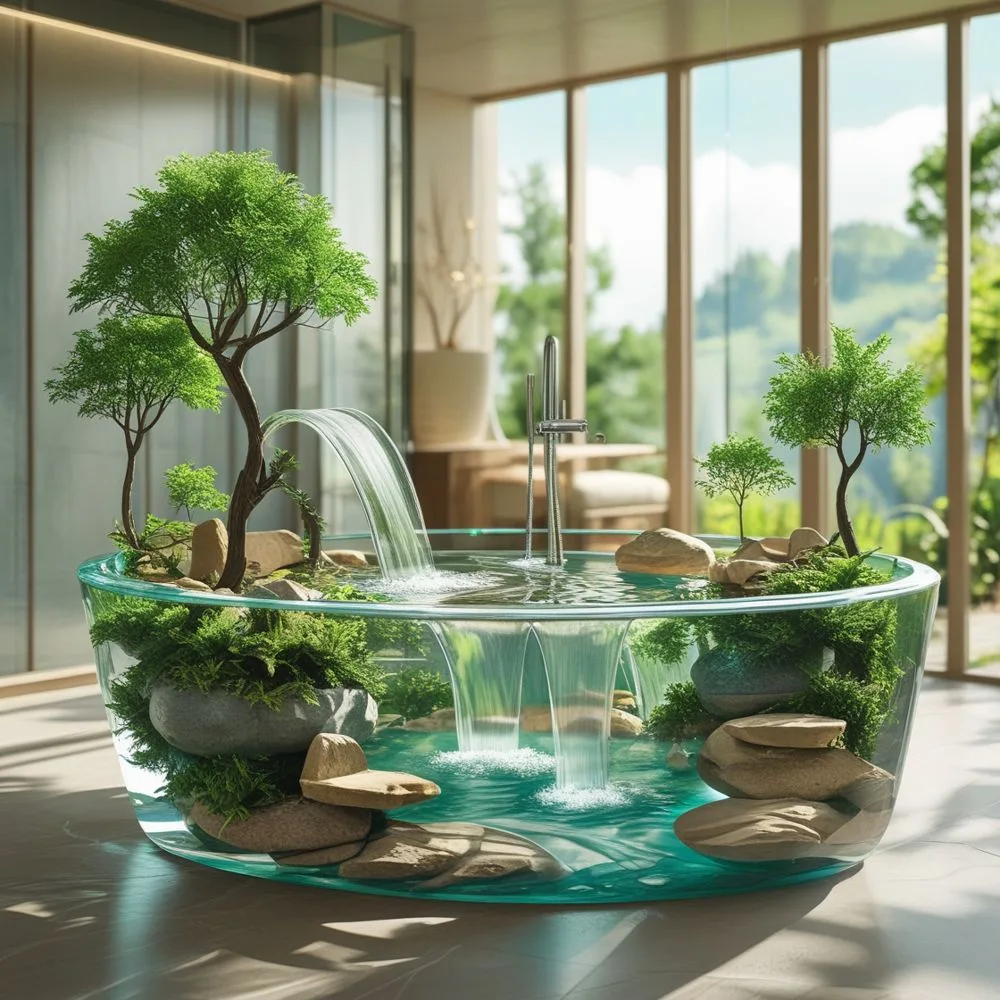
The experience is meditative and calming, ideal for decompressing after a long day or preparing for restful sleep.
Aesthetic and Architectural Impact
Nature bathtubs often define the entire tone of a space. Their organic forms soften otherwise rigid bathroom layouts and make a strong visual statement.
- Centerpiece effect: Even minimalist bathrooms feel warm and inviting
- Contrast and balance: Pair natural elements with modern fixtures for tension and harmony
- Customizable looks: Each material and finish changes the mood—from a tranquil stream to a rugged cliffside
Sustainability and Eco-Awareness
For eco-conscious homeowners, stunning nature bathtubs offer a sustainable alternative to mass-produced bathroom ware. When made responsibly from recycled or renewable materials, these tubs reflect a lifestyle of reduced consumption and environmental respect.
- Wood from responsibly managed forests
- Stone from local or reclaimed sources
- Low-energy manufacturing techniques
Some bathtubs also incorporate greywater systems, allowing used water to irrigate plants nearby.
Design Considerations for Nature Bathtubs
Choosing the Right Setting
For a nature bathtub to shine, the surrounding environment matters. The best setups complement rather than compete with the tub’s natural look.
- Indoor bathrooms: Use skylights, indoor plants, and neutral tiles
- Outdoor installations: Position tubs with views of trees, water, or open sky
- Transition spaces: Enclosed verandas or glass-walled areas blur the line between indoors and outdoors
Integration With Other Natural Elements
Enhance the ambiance by adding materials that speak the same language:
- Pebble floors or moss mats
- Wooden shelves and accessories
- Live plants and hanging greenery
- Bamboo blinds or soft cotton towels
Together, these elements create a full sensory experience that reflects balance and organic unity.
Maintenance Needs
While undeniably beautiful, some stunning nature bathtubs require extra care:
- Wooden tubs need regular oiling and moisture control
- Stone tubs may need sealing to prevent staining or erosion
- Living moss or vertical plants need irrigation and light management
Plan for long-term care to maintain the tub’s integrity and beauty.
Examples of Nature-Inspired Bathroom Spaces
Forest Retreat With Stone Tub
Nestled in a mountain cabin, a hand-carved granite tub sits beside a wall of windows, with trees framing every bath. Natural sunlight, gentle birdsong, and a wood-burning stove complete the ambiance.
Rooftop Garden Soak
In an urban home, a deep wooden tub sits amidst planter boxes of bamboo and jasmine. Though surrounded by buildings, the space feels like a high-rise jungle retreat.
Examples of Nature-Inspired Bathroom Spaces
Minimalist Zen Bath
In a modern home, a white concrete bathtub with curved edges is surrounded by smooth river stones. A single bonsai tree and soft paper lanterns complete the calming scene.
Transforming Bathing Into a Sacred Ritual
Stunning nature bathtubs represent more than just a luxurious design choice—they symbolize a desire to slow down, return to the earth, and reclaim simple moments of joy. Whether carved from ancient rock, shaped from sustainable wood, or built into a living garden, these bathtubs transform daily bathing into a ritual of connection, both with oneself and with the natural world.
Their appeal lies in the authenticity of their materials, the calm they inspire, and the sense of timelessness they introduce into the most intimate room of the home. As architecture evolves to embrace wellness and sustainability, the nature bathtub stands as a poetic union of function and feeling, of water and earth, of luxury and life.
